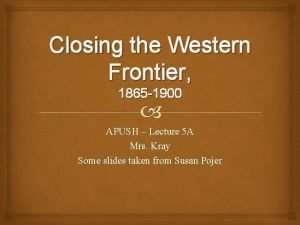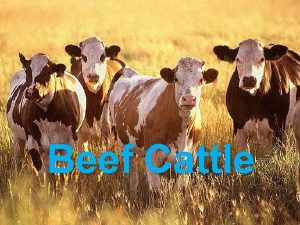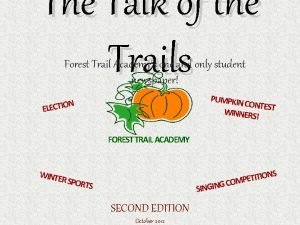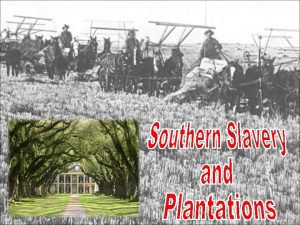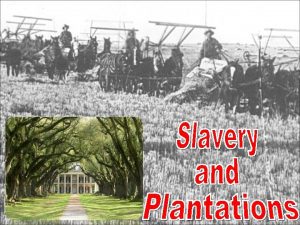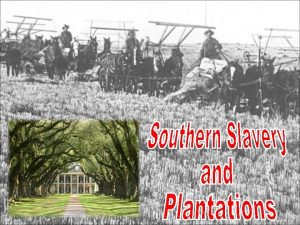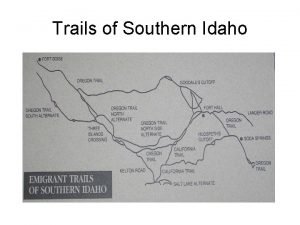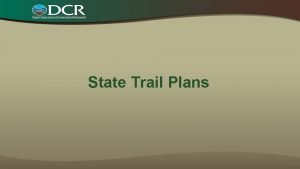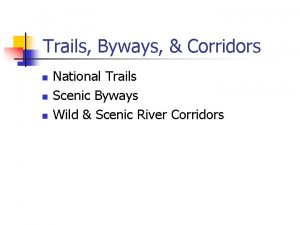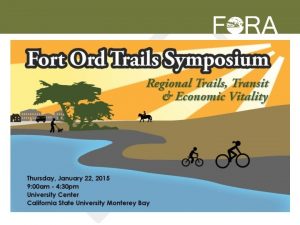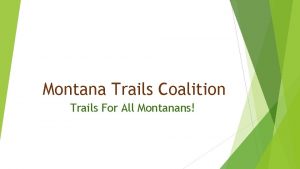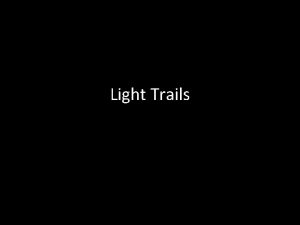CATTLE CATTLE TRAILS AND COTTON ORIGIN OF CATTLE











- Slides: 11

CATTLE, CATTLE TRAILS, AND COTTON

ORIGIN OF CATTLE � � The Spanish first brought cattle & horses to Texas By early 1800’s: nearly 1 million wild longhorns in TX Spaniards allowed their cattle to roam the plains freely & marked their cows with a brand to show ownership. Large Spanish/Mexican ranches existed in northern Mexico and Texas.

THE FIRST CATTLE RANCHERS IN TX -First ranchers: Spanish priests and soldiers! � -1820’s: Anglos entered the business & soon adopted ways of Spanish-Mexican vaqueros – riding, roping, herding, and branding. � -Early ranchers faced many problems: drought, disease, theft, and finding markets for their stock �

INFLUENCE OF THE CIVIL WAR � � � � By 1865 millions of longhorns roamed TX & worth only $3 to $4 in TX In East, sold for $30 to $40 each!! WOW! Large supply and high demand created great profits! Cattle boom helped TX recover from the war! New markets opened As population grew, demand soared! During war, cattle decreased in North & increased greatly in Texas

SPREAD OF RANCHING THRU THE STATE � Late 1870’s – land & cattle companies owned over HALF the land in West Texas! � Ranchers soon enclosed their land – ending large cattle drives � King Ranch � Charles Goodnight’s JA Ranch � XIT Ranch � Sheep, goat, and mustang ranches expanded in Texas

FENCE CUTTING WARS � Barbed wire changed Texas forever… � Landless cattle owners wanted the open range again where cattle had access to water and grass - cut fences! � Threatened ranchers, burned pastures � Caused damages around $20 million � 1884, Texas made it a felony to cut a fence! � End of the decade, Rangers brought an end to fence cutting war

MYTHS AND REALITIES � � � Herd moved 10 -15 miles a day Guard duty at night Most cowboys – teens to early 20’s (small build) 2 out of 3 were Anglos – rest African Americans, Tejanos, Mexicans, Indians, and few women! Trail rides were strenuous with cowboys averaging 30 to 36 hours in the saddle

CATTLE TRAILS � Northern demand for beef led to rise of cattle trails � Roundup – took place in spring � Cowboys drove herds north to towns with rail stations � Cattle sent by rail to Northern states where they would be slaughtered for meat

FAMOUS TRAILS Chisholm Trail � Great Western Trail � Goodnight-Loving Trail � Shawnee Trail �

COTTON AND CASH CROPS � � � New methods of farming – dry farming, irrigation, and terraces Increase of sharecropping and tenant farming, which resulted in many people in deep debt New cash crops were grown in Texas (e. g. , wheat, sorghum). Cotton and corn grown across the state Crops affect inflation

ECONOMIC GAINS � Expansion of the railroad � Cattle ranching becomes a business, rather than a way of life � Growth of large ranches
